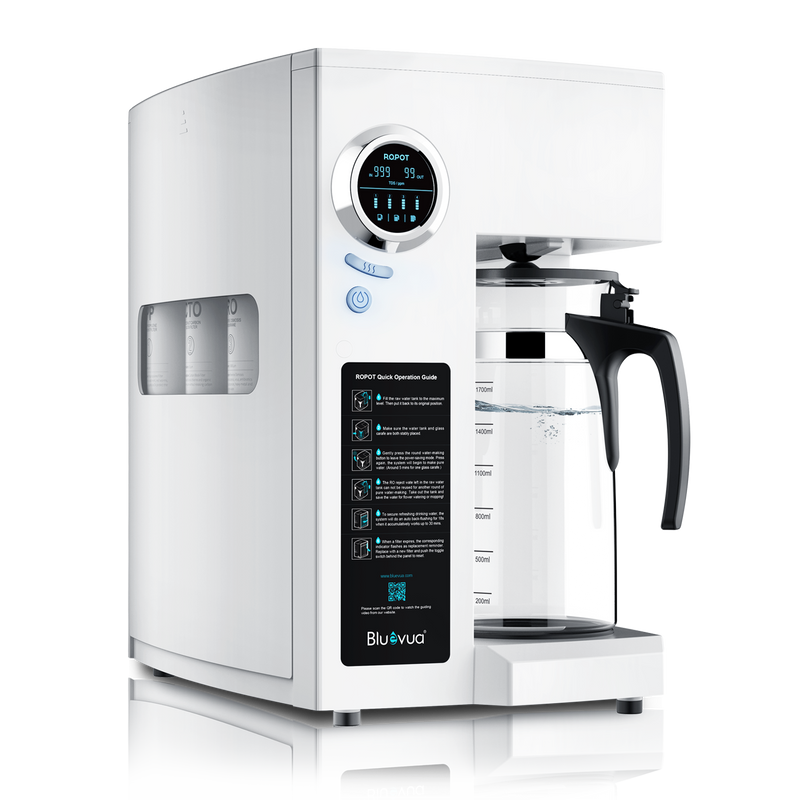Unlock the Secrets of Reverse Osmosis: Discover the Hidden Truths Behind Pure Water!
Unlock the Secrets of Reverse Osmosis: Discover the Hidden Truths Behind Pure Water!
In a world where clean water is essential for health and well-being, understanding the processes that ensure its purity is crucial. One such process is reverse osmosis water filter system, a remarkable technology used widely in water purification. This method not only filters out harmful contaminants but also enhances the taste and quality of drinking water. As we delve deeper into the workings of reverse osmosis water filter systems, we will explore their numerous benefits, such as improved water quality and health advantages. However, it's also important to consider potential drawbacks, including water wastage and the removal of essential minerals. Join us on this journey to uncover the secrets of reverse osmosis and how it can transform your water quality.
Understanding Reverse Osmosis: The Science Behind It
Reverse osmosis (RO) is a water purification process that utilizes a semi-permeable membrane to remove ions, molecules, and larger particles from drinking water. The process is based on the natural phenomenon of osmosis, where water moves through a membrane from a region of low solute concentration to a region of high solute concentration. In reverse osmosis, this process is reversed by applying pressure to the concentrated side, forcing water molecules through the membrane while leaving contaminants behind. The membrane acts as a barrier, allowing only pure water to pass through, while impurities such as salts, bacteria, and organic compounds are filtered out. This technology is often used in various applications, from residential water filtration systems to industrial water treatment plants. As a personal anecdote, a friend of mine installed an RO system in her home and was amazed at the clarity and taste of her water compared to what she had been drinking before.
Benefits of Reverse Osmosis Water Filter Systems
Reverse osmosis systems offer numerous advantages that make them an attractive option for water purification. One of the most significant benefits is the remarkable improvement in water quality. RO systems are known for their ability to remove a wide range of contaminants, including lead, chlorine, fluoride, nitrates, and even some pathogens. By significantly reducing these harmful substances, reverse osmosis can help protect your health and that of your family. For instance, during a dinner at my friend's house, she shared how her reverse osmosis system eliminated the metallic taste in her water, which she later learned was due to high lead levels in her previous supply. Furthermore, RO systems can enhance the taste of water, making it more enjoyable to drink. The health benefits extend beyond taste; consuming clean water can lead to improved hydration and overall wellness. Additionally, many RO systems come equipped with mineral filters that can reintroduce beneficial minerals back into the water, ensuring you receive the best of both worlds—purity and health.
Potential Drawbacks of Reverse Osmosis Systems
While reverse osmosis systems are highly effective, they are not without their drawbacks. One of the main concerns is water wastage. For every gallon of purified water produced, an RO system can waste several gallons, depending on its efficiency. This is particularly concerning in areas where water is scarce. Another potential drawback is the removal of essential minerals from water, such as calcium and magnesium. While this may seem advantageous in terms of removing harmful substances, it can also lead to a lack of beneficial nutrients in your drinking water. Some people choose to mitigate this by using mineral filters or remineralization cartridges to restore these minerals post-filtration. Furthermore, regular maintenance is required to keep the system functioning optimally, including replacing filters and membranes, which can be an added expense and effort. Balancing these drawbacks with the benefits is essential for making an informed decision about whether a reverse osmosis system is right for you.
Choosing the Right Reverse Osmosis System for Your Needs
When selecting a reverse osmosis system, there are several factors to consider to ensure it meets your specific needs. First, assess your household's water usage to determine the capacity required. Systems come in various sizes, so it's crucial to select one that can handle your daily consumption. Additionally, consider the number of filtration stages; a multi-stage system typically provides better purification by addressing a wider range of impurities. Installation is another aspect to keep in mind. Some systems are designed for easy DIY installation, while others may require professional help. Evaluating your plumbing setup and personal preferences will help you choose the right installation method. Lastly, examine the maintenance requirements, including how often filters need to be replaced and the cost associated with upkeep. By considering these factors, you can select a reverse osmosis system that aligns with your lifestyle and water quality goals.
Evaluating the Impact of Reverse Osmosis on Water Quality
In summary, understanding reverse osmosis systems is vital for anyone looking to improve their water quality. The process effectively removes contaminants, enhancing both taste and health benefits. However, it's important to weigh the potential drawbacks, such as water wastage and the removal of beneficial minerals. By carefully considering your household needs and the options available, you can make an informed choice about whether a reverse osmosis water filter system is the right solution for you. As we continue to navigate the importance of clean water, reverse osmosis stands out as a powerful tool in achieving pure, safe drinking water.
